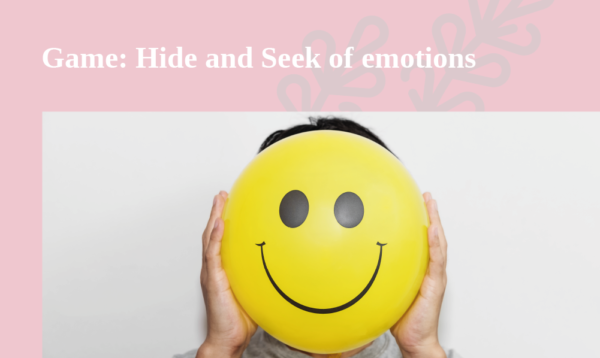Not a few children have learned to hide their feelings and find it difficult to talk about what troubles them and shut themselves up. The result is often that these children either stifle their emotions more and more profoundly or, not knowing how to manage them, break out in various ways, often risk injuring themselves or those around them.
The game “Hide-and-seek of emotions” can be implemented within the family or school and offers children a safe environment to directly express and discuss their feelings. Open communication about different emotional situations is improved, and family relationships are strengthened through direct communication.
For this game, we will need some colorful cardboards, each of which will be painted a person with a feeling and recorded the emotion’s name (e.g., happy, sad, jealous, angry, guilty, excited, etc.).
Before the game, we glue the cardboards by hiding them in different room parts with varying difficulty levels. For younger children, cardboard can be hidden in prominent places.
The game coordinator (parent/teacher) explains that people ignore their feelings and keep them hidden instead of managing them in many cases. It may seem practical, but hidden emotions still exist and continue to annoy the person until they come to the surface and are addressed. In this game, emotions are initially hidden and, through “hide and seek,” are discovered and discussed. Players (young and old) find hidden cards and recount once they experienced the feeling written on the card.
In the closing debate at the end of the activity, we can ask the following:
· What was the most comfortable feeling you talked about?
· What was the most challenging feeling you talked about?
· Is it better to hide or talk about your feelings and why?
· Who is the person in the family with whom you feel most comfortable talking about your feelings and why?
· Who is the person in the family you find most difficult to talk to about your feelings and why?
· How do you think your family can make communicating about emotions better and easier?
· What did you learn from today’s game?
Through this game, all participants have the opportunity to identify and communicate their feelings. This activity also helps build and expand children’s emotional vocabulary and promotes an environment that promotes healthy emotional expression.
If there is a specific problem/issue within the family, the cardboard’s feelings can be related to it (e.g., divorce, death, failure at school, etc.). Through the “Hide and seek of Emotions,” all the emotions that come to the surface are normalized and validated. Besides, strategies for dealing with emotional overload can be identified and discussed.
Lowenstein, L. (2011). Favorite Therapeutic Activities for Children, Adolescents, and Families: Practitioners Share their Most Effective Interventions. Champion Press.


